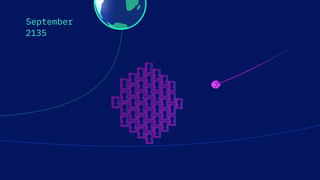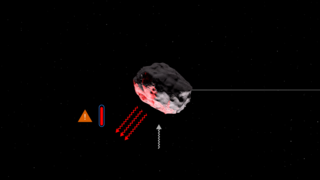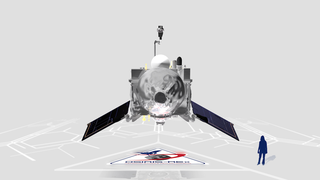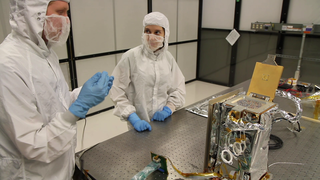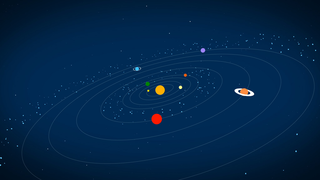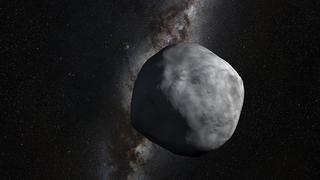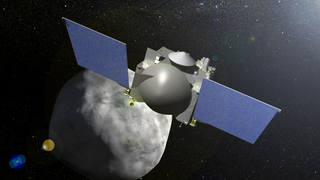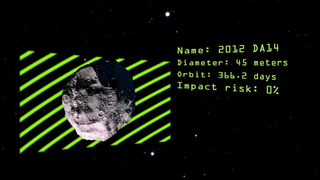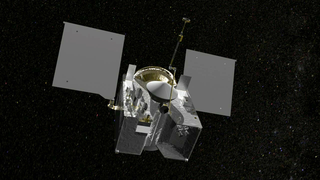Sun
ID: 11964
Near-Earth asteroids like Bennu pose a potential danger to our planet, so it's important to predict their orbits with great accuracy. Unfortunately, a phenomenon called the Yarkovsky effect can make these predictions difficult over long time periods. How does this effect work?
How Sunlight Pushes Asteroids
When sunlight strikes a rotating asteroid, the dayside heats up; as the asteroid turns, the night side cools and releases the heat, exerting a small thrust that can change the asteroid's direction over time. In order to learn more about this process on asteroid Bennu, NASA is sending a spacecraft called OSIRIS-REx to make detailed observations of Bennu's shape, brightness, and surface features. These factors are thought to influence the Yarkovsky effect, and understanding how will enable scientists to better predict the orbit of Bennu and other near-Earth asteroids.
Used Elsewhere In
Related
For More Information
Credits
Chris Smith (Self):
Animator
Narrator
Writer
Producer
Edward Beshore (The University of Arizona):
Scientist
Dan Gallagher (USRA):
Producer
Animator
Narrator
Writer
Producer
Edward Beshore (The University of Arizona):
Scientist
Dan Gallagher (USRA):
Producer
Please give credit for this item to:
NASA's Goddard Space Flight Center
NASA's Goddard Space Flight Center
Short URL to share this page:
https://svs.gsfc.nasa.gov/11964
Mission:
OSIRIS-REX
This item is part of this series:
Narrated Movies
Goddard TV Tape:
G2015-063 -- The Yarkovsky Effect
Keywords:
SVS >> Asteroid
SVS >> HDTV
SVS >> Radiation
SVS >> Rotating
SVS >> OSIRIS-REx
NASA Science >> Sun
SVS >> Near-Earth Object
SVS >> Yarkovsky Effect
SVS >> Bennu
https://svs.gsfc.nasa.gov/11964
Mission:
OSIRIS-REX
This item is part of this series:
Narrated Movies
Goddard TV Tape:
G2015-063 -- The Yarkovsky Effect
Keywords:
SVS >> Asteroid
SVS >> HDTV
SVS >> Radiation
SVS >> Rotating
SVS >> OSIRIS-REx
NASA Science >> Sun
SVS >> Near-Earth Object
SVS >> Yarkovsky Effect
SVS >> Bennu
